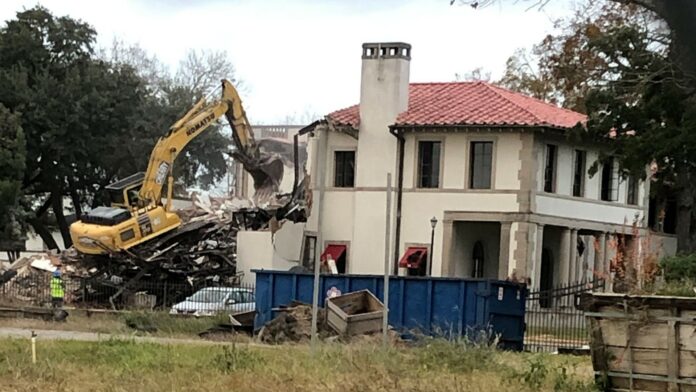Buying a rental property can still be profitable in 2025, but it is no longer a rising tide that lifts all boats. Returns depend on purchase price discipline, financing costs, realistic rent assumptions, and the ability to manage vacancies. The good news is that inflation in Kenya has eased into the target range, financing benchmarks are down from early 2025 peaks, and rental yields in several submarkets remain resilient. The flip side is that lending rates for households and small businesses remain elevated, and global house prices in real terms are not surging the way they did in 2020 to 2022. Put together, this means first-time investors need a methodical approach.
Below is a step-by-step playbook, with benchmarks and tools to run the numbers before you commit.
1) Read the 2025 macro signals that matter for landlords
Kenya’s annual CPI inflation was 4.5 percent in August 2025, within the official 2.5 to 7.5 percent target band. Lower and more stable inflation reduces uncertainty around rent escalation and maintenance costs.
Policy rates have trended lower through 2025. The Central Bank of Kenya reduced the policy stance during the year, and by September 2025 the commercial banks’ weighted average lending rate still hovered near 15 percent, reflecting a lagged pass-through to households and SMEs. Plan conservatively when you model mortgage payments.
Globally, real house prices are not overheating. BIS data show that real house prices fell 1.0 percent year over year in the first quarter of 2025, with advanced economies modestly up and emerging markets slightly down. This is a sign to prioritize cash flow over speculative appreciation.
Takeaway for first-timers: assume today’s financing will not be ultra cheap, assume moderate rent growth tied to inflation, and underwrite deals on cash flow, not on a hope for rapid price gains.
2) Anchor your expectations with local rental yield evidence
Independent research indicates that Kenya’s investment grade rental yields have been steady, not collapsing. For example, sector reports for 2024 show average yields in mid to high single digits across segments, with submarket selection a key driver of performance.
International vacancy and absorption patterns also remind us that supply cycles affect rents. In the United States, the rental vacancy rate reached 7.0 percent in the second quarter of 2025 as new supply came online, a cautionary example of why micro location and product fit are crucial.
Takeaway: use local yield ranges as a sanity check and verify them against actual asking rents and recent leases in your target micro market.
3) Build a conservative deal model before viewing properties
A simple cash flow model forces discipline. List the monthly rent, subtract vacancy, operating costs, and financing. Aim for a positive cash on cash return after all costs, not just a paper yield.
Start with rent and vacancy. Use recent comps, not just online listings. If you plan flexible move in dates to fill units faster, budget for prorated charges in the first and last month of a lease.
Estimate operating expenses. Include service charge, property management, routine repairs, insurance, land rates, and a maintenance reserve. Rising construction input costs often show up with a lag, so your reserve should be real.
Price your financing with a margin of safety. Use today’s actual offered mortgage rate quotes, not only the policy rate, to model payments.
Helpful tool for a quick first pass: plug your figures into a rental rental property calculator. It outputs cap rate, cash flow, cash on cash, and break even occupancy, which helps you rapidly test multiple scenarios before you ever pay for an appraisal.
4) Stress test the rent path and the exit value
Rents tend to track inflation and wage growth rather than jump unpredictably. Across OECD economies, lower income renters carry a higher risk of being overburdened by housing costs, which caps how fast rents can rise without hitting demand. Use conservative rent growth that aligns with local CPI rather than double digit hopes.
For long term value, forecast with a transparent compounding assumption. Test scenarios such as 3 to 5 percent annual appreciation over 10 to 15 years and compare them with realistic inflation baselines. A simple way to do this is using a future value calculator, which keeps expectations grounded and helps you avoid overpaying based on rosy exit numbers.
5) Plan for vacancies and mid month move ins without losing money
Vacancy is a fact of life. Two practical practices protect your return:
Proactive leasing. Start marketing 60 days before expiry and consider flexible move in windows. In markets with rising supply, homes can take longer to place, as international data on absorption of new apartments has shown.
Prorated billing. When tenants arrive or leave mid month, charging a fair daily rate preserves goodwill and prevents revenue leakage. You can compute the exact daily charge with a prorated rent calculator.
6) What good looks like for a first time deal in 2025
Benchmarks vary by neighborhood, but the following targets are a solid starting point in the 2025 environment:
Entry cap rate at acquisition equal to or higher than your realistic cost of debt. If your mortgage offer is near the mid teens, a 7 to 9 percent gross yield will not carry the deal unless expenses are extraordinarily low. Use net yield and cash on cash as the final decision metrics.
Break even occupancy at or below 85 to 90 percent. This gives you room to absorb one empty month per year without going cash flow negative.
Debt coverage ratio above 1.20 on realistic rent and expense assumptions. This is a basic safety margin that many lenders look for and that protects you when repairs run hot.
A maintenance and capital reserve set aside from day one. Older buildings can surprise you with roof, plumbing, or electrical issues that overwhelm a thin budget.
Enter these thresholds into your model and adjust until the numbers clear the bar.
7) Micro market diligence that first timers sometimes skip
Tenant profile. Match your unit type and finish level to a clearly defined tenant pool. If your target area is dominated by families, two bedroom units may have more stable demand than tiny studios.
Walkability and transport. Proximity to reliable transport and employment nodes often matters more for occupancy than cosmetic finishes. Visit at peak hours and speak to shopkeepers and caretakers.
Competing supply. Track building approvals and handovers. A flood of nearly identical apartments can stretch leasing timelines, pressure rents, and push concessions.
Property management realism. Cost out professional management and a handyman network before you buy. Cutting corners here often costs more later through longer vacancies.
8) Financing tactics in a high lending rate world
Shop widely and negotiate. Even as the policy stance eased during 2025, retail lending to households has remained elevated. Request written quotes from multiple lenders and compare the all in APR, including fees and insurance.
I guaranteed friend Sh5m Faulu loan, lost Sh32.5m property to auctioneers
Rate type and reset risk. Understand whether your loan is fixed for a period or variable against a benchmark. Ask how and when your rate can reset and recalculate your break even occupancy under that scenario.
Conservative leverage. In 2025, less debt often equals more sleep. A slightly larger down payment can bring your debt coverage ratio above safety thresholds and reduce the chance that a surprise repair pushes you negative.
9) Responsible rent setting and tenant onboarding
Price to your target return, not just to match neighbors. Use your net yield and cash on cash targets to set a rent floor that makes sense after expenses.
Offer clear prorated options for mid month leases. This is a win win. You maintain fairness and occupancy, and tenants pay only for the days they use.
Document and communicate. Provide an itemized first month statement that shows base rent, prorated days, deposit, and any utilities or service charges. This reduces disputes and speeds collections.
10) Exit strategy thinking on day one
Good landlords buy with the exit in mind. Three practical exit paths to evaluate upfront:
Hold and refinance. If rates fall and your property builds equity and a stable rent roll, a refinance can lock in better terms. Stress test this using equity growth assumptions that align with inflation and realistic appreciation.
Sell to an owner occupier or to another investor. Owner occupiers pay for lifestyle attributes while investors pay for yield. Upgrades should be targeted accordingly.
Know your tax context. Do not assume foreign style tax deferrals. Speak with a tax professional early so you do not assume benefits that are not available.
11) A simple first deal checklist
Validate market rent using three to five recent leases within one kilometer and the same unit type.
Build a conservative cash flow model that accounts for vacancy, operating costs, and realistic financing.
Stress test rent growth at CPI and at CPI minus one percentage point using current inflation as your baseline.
Compute move in prorations accurately and document them on the first invoice.
Project potential sale price scenarios with transparent, conservative appreciation rates and compare against inflation.
Recheck your deal against submarket yield evidence. If your net yield is far below the ranges indicated by independent research, renegotiate or walk away.
Bottom line for 2025
Rental property can still be profitable for first time investors in 2025, provided you buy for income rather than for speculative appreciation. Kenya’s inflation backdrop is supportive, policy rates have eased from earlier highs, and average rental yields have held up, but lending rates remain elevated and tenants are price sensitive. If you underwrite conservatively, insist on positive cash flow after a vacancy allowance, and run your numbers with the three calculators above, you can tilt the odds in your favor. Key indicators to watch as you evaluate specific opportunities include KNBS monthly CPI releases, CBK lending dashboards, BIS housing indicators, and local yield surveys that break outcomes down by unit type and neighborhood.








